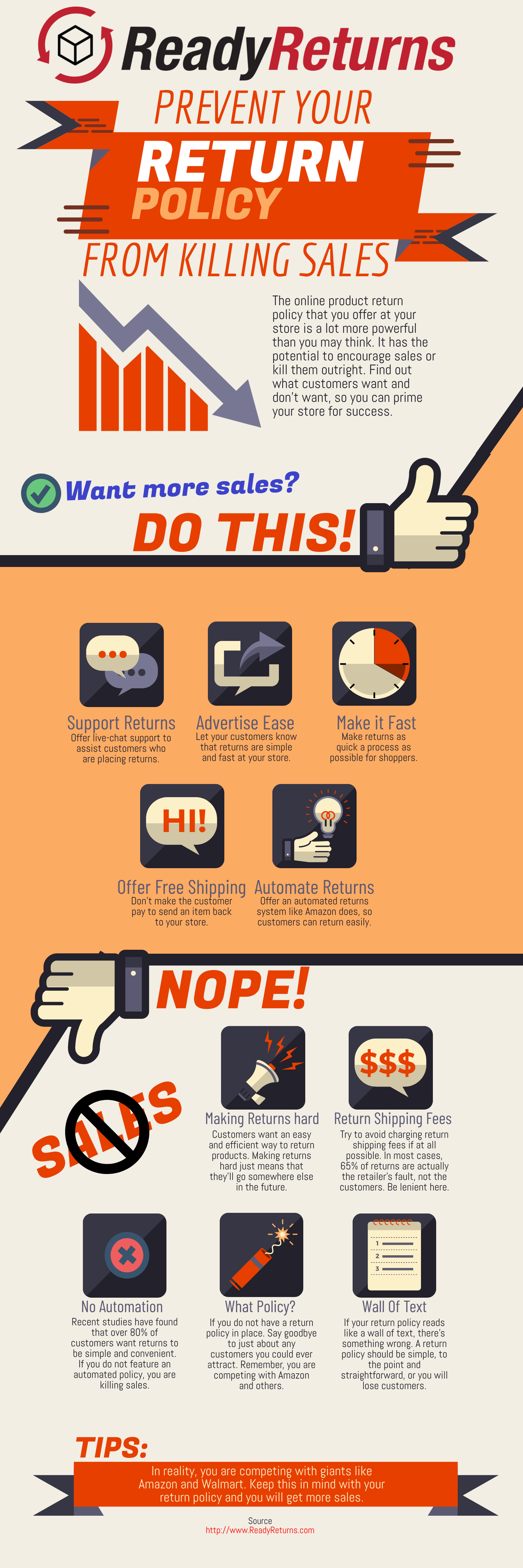In the ever-evolving landscape of ecommerce, one aspect that quietly yet significantly influences customer satisfaction and business success is the management of product returns. With the burgeoning growth of online shopping, returns have become an integral part of the consumer experience, posing both challenges and opportunities for retailers.
As the digital marketplace continues to expand, understanding the dynamics of ecommerce returns is becoming increasingly critical. From the impact of returns policies on customer purchasing decisions to the innovative use of technology in streamlining returns processes, this exploration offers valuable insights.
Use this article which will deliver key facts about ecommerce returns to learn about proven strategies your business to transform returns from a logistical hurdle into a competitive advantage, ultimately contributing to sustained business growth and customer satisfaction.
The Rising Tide of Ecommerce and Returns
ecommerce has not just grown; it has exploded in recent years. The global ecommerce market, valued at approximately $6.3 trillion in 2023, is projected to grow to $8.1 trillion by 2026, according to data from Statista. This monumental rise is mirrored in the volume of package shipping, which has seen a consistent year-over-year increase.
This surge in ecommerce has brought with it a significant rise in online product returns. In a recent review of trends in ecommerce returns by Shopify, they estimate the average rate of return for ecommerce orders can be as high as 20-30%.
This number might be higher than many ecommerce business owners expect. While it certainly varies significantly by product type and company, this should drive home the idea that returns are a key part of doing business online and how you handle them will play a large role in the ultimate success of your company.
As consumers grow more comfortable with online shopping, their expectations for easy and accessible return policies rise concurrently. Many studies of consumer behavior have continued to validate the fact that the overall returns experience impacts their likelihood of shoppers purchasing from a retailer again. The concept is straightforward; offer a smooth returns process or those customers will buy from a company that does.
The shift in consumer behavior is further evidenced by the type of products being returned. Clothing and accessories, for instance, have one of the highest return rates, often due to issues with fit or appearance, which are hard to gauge online. Electronics and high-value items also see significant return rates due to buyer’s remorse or unmet expectations.
Interestingly, the growth in ecommerce returns is not seen uniformly across all regions. Markets with a longer history of online shopping, like the United States and Europe, have higher return rates compared to emerging ecommerce markets in Asia and Africa. This difference can be attributed to varying levels of consumer trust and differing return policies across regions.
Seasonal trends also significantly impact return rates. The post-holiday period, for instance, sees a spike in returns, commonly referred to as ‘reverse logistics’, with retailers often preparing for this surge well in advance.
The rising tide of ecommerce and returns is a multifaceted issue. It’s shaped not just by the increasing volume of online sales but also by evolving consumer expectations, regional differences, and seasonal trends. Grasping these intricacies is essential for enterprises aiming to evolve and thrive in the fiercely competitive realm of ecommerce.
Customer Behavior: Returns as a Decision Factor
In the realm of ecommerce, customer behavior is rapidly evolving, especially in the context of returns. This evolution is not only shaping how businesses approach their return policies but also influencing customer purchase decisions. Here are some key stats and insights:
- Impact of Return Policies on Purchase Decisions: Many consumer surveys have shown that as many as 60% of online shoppers will review a company’s return policy before making a first purchase from them. This clearly highlights that return policies play a pivotal role in influencing consumers’ purchasing decisions.
- Returns and Customer Loyalty: Contemporary research indicates that approximately 80% of consumers shopping online are more inclined to buy from businesses providing complimentary return options. This highlights the direct correlation between return policies and converting website visitors into first-time customers.
- Return Window as a Key Factor: Consumers do not just look at whether you offer convenient returns, they also look at how long they have to process a claim for a return or exchange. Most consumers now expect a 30-day returns window and anything less can drive them to competitors that offer at least that long.
- Environmental Concerns and Returns: There is a growing trend of consumers that wants brands to go a step further and offer return options that do not require a shipment. Even if that is not an immediate option, it is worth considering how your company can offer drop off points or consolidation options for your returns.
The shift in customer behavior underscores a broader trend in ecommerce: consumers are seeking not just quality products, but also a seamless and transparent shopping experience, which includes the returns process. Retailers that recognize and adapt to these consumer preferences are more likely to build lasting relationships with their customers.
With the ongoing expansion of online retail, the significance of having an effective, clear, and consumer-centric returns policy increasingly comes into focus. Retailers who invest in understanding and meeting these expectations are positioned to reap significant benefits in customer satisfaction and loyalty.
The High Cost of a Bad Returns Experience
The repercussions of a negative returns experience in ecommerce are significant and far-reaching. This facet of client care can significantly impact a company’s financial performance and standing in the market. Here are three key statistics that underline the critical importance of an effective and customer-friendly returns process:
- Loss of Customer Loyalty: 85% or more of consumers will never purchase from a company again if their returns process was a hassle.This statistic underscores how a single poor experience can drastically reduce customer loyalty and repeat business.
- Negative Reviews and Brand Perception: Dissatisfied customers are likely to share their negative experiences online, which can significantly impact a brand’s reputation. A recent survey targeting frequent online buyers revealed that 93% of the participants acknowledged the influence of online reviews on their purchasing choices.
These statistics highlight the paramount importance of not only having a well-defined returns policy but also ensuring its flawless execution. A negative returns experience can lead to loss of customers, damage to brand reputation, and significant financial repercussions.
In contrast, a positive and efficient returns process can be a powerful tool for building customer trust and loyalty, ultimately contributing to a business’s success.
Returns: A Golden Opportunity for Customer Loyalty and Upselling
While often perceived as a challenge, returns in ecommerce can be strategically used to foster customer loyalty and drive upselling. Here are three top tips for turning the returns process into a positive experience for customers, thereby enhancing their loyalty and opening up upselling opportunities:
- Offer Incentives for Future Purchases: Encourage customers to remain engaged with your brand by offering incentives as part of the return process. This might involve offering them a discount code for their next purchase or awarding them additional loyalty points. While it might seem like an additional cost on an already expensive part of doing business online, making this simple change can have a dramatic impact on those customers that do have to go through your returns process for one reason or another.
- Customizing the Returns Journey: Customizing the returns process can profoundly influence customer allegiance. Such personalization could entail suggesting products that align with past purchases or individual tastes. According to a recent study by Segment, 60% of shoppers report a higher likelihood of making repeat purchases following a shopping experience tailored to their preferences. This strategy not only elevates customer contentment but also paves the way for promoting additional or complementary items.
- Streamline the Returns Process: Ensuring a seamless and uncomplicated returns procedure is vital for improving customer satisfaction. Implement easy-to-use return portals and clear communication throughout the process. Making returns convenient and straightforward can significantly boost customer trust and loyalty.
These tips emphasize the importance of viewing returns not as a loss but as an opportunity to reinforce customer relationships and explore upselling possibilities.
By offering incentives, personalizing the experience, and streamlining the process, businesses can convert the returns process into a strategic advantage, enhancing both customer loyalty and sales.
Embracing Returns: An Integral Part of ecommerce Success
Returns are an inevitable aspect of ecommerce, reflecting the nature of online shopping where physical examination of products is not possible. However, far from being just a necessary evil, returns offer a unique opportunity for businesses to demonstrate their commitment to customer satisfaction and service excellence.
The key lies in shifting the perspective from viewing returns as a cost center to seeing them as a crucial touchpoint in the customer journey. This approach involves not just simplifying the return process but also using it as a platform for gathering customer feedback and insights, which can be invaluable for product improvement and innovation.
Implementing a seamless returns process is more than just a logistical endeavor; it’s about enhancing the overall customer experience. Businesses that streamline the returns process make it easy and hassle-free for customers, thereby significantly increasing the likelihood of repeat purchases.
For example, offering flexible return options such as in-store returns, free return shipping, or immediate refunds can greatly enhance customer satisfaction. Study after study confirms that more than 90% of shoppers will happily place another order with brands that have convenient and hassle-free returns.
What’s more, offering a seamless return process can also lead to positive word-of-mouth and social proof, as satisfied customers often share their experiences with others, further extending the reach and reputation of the brand. By embracing returns as an integral part of their business strategy, ecommerce companies can not only retain existing customers but also attract new ones, ultimately driving long-term success and growth.
The Hidden Challenges of Returns: Dealing with Abuse and Fraud
Returns, while an integral part of customer service in ecommerce, come with their own set of challenges. Among the most pressing is the issue of returns abuse and fraud, which has been on the rise in recent years. This kind of abuse occurs when customers exploit return policies in ways they were not intended to be used, such as wearing an item before returning it, or fraudulently claiming an item was never received.
A recent study by National Retail Federation and Appriss Retail found that online retailers lose $13.70 to returns fraud for every $100 in returned merchandise. This considerable financial impact highlights the imperative for companies to remain alert and take preemptive actions in detecting and thwarting fraudulent practices.
There are several forms of returns abuse and fraud, including wardrobing (returning used items), bracketing (buying multiple variants with the intent to return most), and return fraud (returning stolen goods or using counterfeit receipts). These practices not only affect a company’s bottom line but also can lead to increased prices for all customers and potentially harm the brand’s reputation.
Top 3 Things to Know About Returns Abuse and Fraud
- Prevalence and Impact: The impact of this abuse goes beyond financial loss; it also strains resources, impacts inventory management, and can deteriorate the trust between customers and businesses.
- Technological Solutions for Detection and Prevention: Advancements in technology are playing a crucial role in combating returns abuse and fraud. Many companies are now using data analytics and AI to track return patterns and identify potential abuse. For instance, software that analyzes customer return behavior can flag unusual activity, enabling retailers to take appropriate action.
- The Importance of Clear Policies and Communication: To mitigate the risk of returns abuse, it’s essential for businesses to have clear and well-communicated return policies. This includes setting boundaries around return conditions and time frames. Transparency in policy communication can deter potential abusers while maintaining a positive experience for genuine customers.
While returns are an essential aspect of customer service in ecommerce, they also open the door to potential abuse and fraud, impacting retailers financially and operationally.
It is crucial for businesses to stay vigilant, employing strategic measures to curb these unethical practices while preserving a positive customer experience. As we transition into the next topic, it becomes apparent that technology plays a pivotal role in this balance, offering sophisticated solutions to streamline the returns process and safeguard against such abuses effectively.
The Role of Technology in Streamlining Returns
Technology has become a game-changer in the world of ecommerce, particularly in managing product returns. The advent of sophisticated software solutions has transformed what was once a logistical challenge into an opportunity for efficiency and enhanced customer experience. Here are the ways in which technology is enhancing and simplifying the returns procedure:
- Automation of Returns Process: Advanced software solutions automate various aspects of the returns process, from initiation to final resolution. Such automation drastically cuts down on the manual labor involved, accelerating the process and minimizing the likelihood of mistakes. For instance, returns management platforms can automatically generate shipping labels, process refunds or exchanges, and update inventory levels, all without the need for manual intervention.
- Simplifying the Customer Experience: Technology enables a more user-friendly returns experience for customers. Online portals allow customers to initiate returns easily, select their preferred resolution (such as refund, store credit, or exchange), and track the status of their return. This level of transparency and ease greatly enhances customer satisfaction and is likely to increase customer loyalty and repeat purchases.
- Enhanced Control and Visibility for Businesses: Returns software provides businesses with greater control over their returns policy and its implementation. Customizable rules can be set, such as return windows, eligible items for return, and restocking fees. What’s more, real-time analytics and dashboards offer visibility into the returns process, helping businesses monitor trends, identify issues, and make data-driven decisions.
- Preventing Returns Abuse and Fraud: Technology is critical in identifying and preventing returns abuse and fraud. By analyzing return patterns and customer behavior, software can flag suspicious activities, helping businesses to take proactive measures against fraudulent practices.
- Insights from Data for Ongoing Enhancement: A major advantage of returns software lies in the extensive data it gathers. Through scrutinizing this data, companies can discern trends and patterns in return activities, grasp consumer habits, and acquire valuable knowledge about product quality and consumer inclinations. This information can be invaluable in improving products, tailoring marketing strategies, and enhancing overall customer experience.
- Integration with Existing ecommerce Platforms: Modern returns management solutions often integrate seamlessly with existing ecommerce platforms, ensuring a smooth workflow and consistency in data management. This integration facilitates a unified approach to sales and returns, helping businesses manage their operations more efficiently.
- Cost Reduction and Environmental Sustainability: By optimizing the returns process, technology also helps in reducing operational costs. Efficient handling of returns means less waste, reduced need for additional storage, and lower shipping costs.
Incorporating technology into the returns process not only simplifies the experience for consumers but also gives businesses enhanced control, visibility, and valuable insights.
For ecommerce enterprises, allocating resources to returns management software has transcended being a mere choice; it has become indispensable for ensuring operational effectiveness, achieving customer contentment, and securing sustained prosperity.
Mastering ecommerce Returns: Boost Sales and Customer Loyalty
Mastering the art of managing product returns is not just a logistical necessity but a strategic opportunity to enhance customer loyalty and drive sales in ecommerce. As we have seen, the growing trend in online shopping brings with it an increase in returns, making it imperative for businesses to adapt and innovate in their returns processes.
The key lies in understanding and embracing the multifaceted nature of returns – from recognizing their inevitable occurrence and potential for customer loyalty enhancement to tackling the challenges of returns abuse and fraud.
Implementing technology in returns management emerges as a game-changer, offering automation, enhanced customer experiences, and invaluable insights. With the right approach and tools, returns can transform from a potential setback to a powerful tool for building trust, encouraging repeat business, and ultimately driving sales. As ecommerce continues to evolve, those who adeptly manage returns will not only survive but thrive, turning potential challenges into opportunities for growth and success.
The world of ecommerce returns is complex, but with strategic management and technological integration, it can become a significant asset to any online retail business. Adopting a forward-thinking and customer-centric stance towards this facet of ecommerce will assuredly result in heightened customer gratification, bolstered loyalty, and continuous business expansion.
ReadyCloud Delivers Better Shipping and Returns
Shipping and returns policies are not just logistical details; they are powerful tools in your e-commerce conversion rate optimization arsenal. By understanding and optimizing these elements, you can dramatically improve your conversion rates, thereby growing your business. Remember, in the world of e-commerce, it’s the little details that make a big difference.
Ready to optimize your e-commerce site for better conversion rates? Consider the importance of shipping and returns in your strategy. With the right approach, you’ll not only retain more customers but also attract new ones, setting your business on a path to success.
Need more ecommerce returns statistics? Check out our recent guides:
➡️ These 10 Statistics on Ecommerce Returns Paint the Full Picture
➡️ 8 Post-holiday Return Facts You Need to Know
➡️ Buyer’s Remorse Can Become Your Gain! 11 Proven Tips on How to Best Handle Post-Holiday Returns











